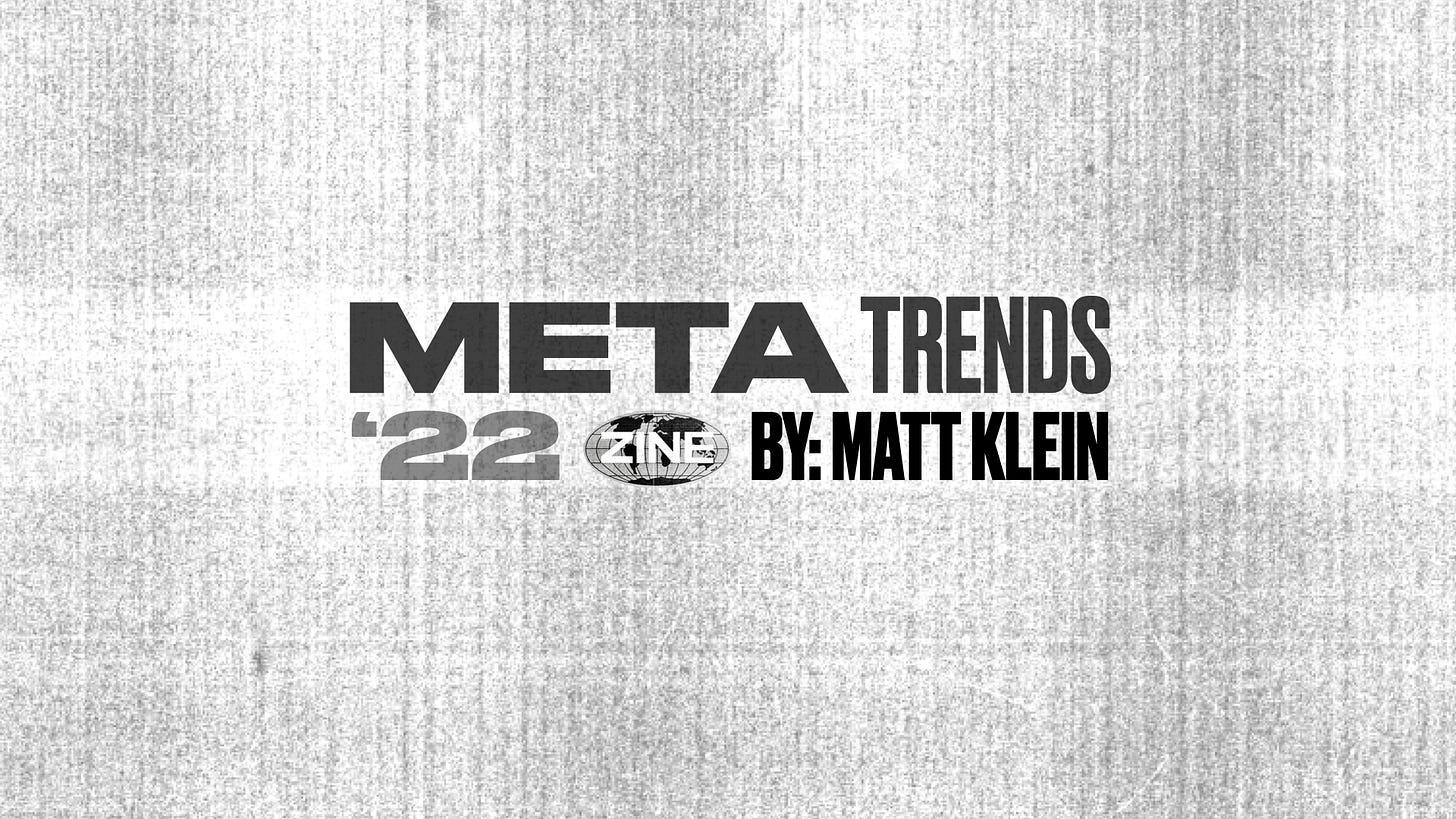The META Trending Trends: 02022
An Analysis of 40+ Global Trend Forecasts → 14 Most Reported Social Shifts
This is the Start, Not the End
02022’s Prologue
The fifth annual META Trend Report synthesizes 500+ trends from 40+ reports, ranking the 14 most frequently reported cultural trends for 2022.
Reports were sourced from: Accenture Retail, Bombas & Parr, Canvas8, Catawiki, Deloitte Insights TMT, Dentsu Creative, Dentsu Media, Deposit Photos, Exploding Topics, Falcon, Foresight Factory, Fjord Accenture, Future Laboratory, GWI, Instagram, Lippincott, Mintel, MTM, Nourish, Mind Body Green, Pinterest, Sparks & Honey, Spring Wise, Trend Hunter, Trend Watching, Ultra Violet, We Are Social, Webby, Well + Good, WGSN, Wunderman Thompson and more. (Good luck tracking these down with link rot.)
Why?
We can forecast accuracy by using reliability and collective intelligence as a proxy.
In distillation is value.
Synthesis > Curation
However, over the last five years my opinion on the purpose and value of this exercise has evolved — after all, changing minds today is underrated.
My excitement for this tradition is waning. Year after year, the same META Trends are surfacing... just with nuanced variation. The repetitiveness of these companies’ trends, and now the META Trends reveals why relying upon these reports (and even this one) is flawed. While META provides confidence, it doesn’t speak to the more valuable and disruptive, quiet forces at play.
Rather than treating these META Trends as an accurate forecast, we must now also use them as filters to seek out what’s NOT discussed.
The edges are the sharpest, and the fringes are the future. To see what’s coming, we must respect the bizarre and validate the weird. These reports don’t. In the nicest way, one who perceives a META Trend as an emergent opportunity is late to the party. META is table stakes. (But, they’re also contextual by brand / vertical — these are not one-size-fits-all territories.)
It’s the weak signals and under-discussed which continue to spur true threats and opportunities: the messy, uncomfortable and complex concepts these report will never face. The overlooked — not the mainstream reportage nor this report — must be our focus. Until then, we have an incomplete picture.
META Trends are not the final product.
They’re the start.
Deeper, these sourced reports often lack a quantitative, let alone cohesive methodology. We should at least expect quant support, but even that’s rare. These reports are also regularly produced in isolation, without third-party collaboration nor consultation. Subjectivity abounds. This is not great news when we’re dealing with an alarmingly homogenous industry. These reports are also authored by orgs with bottom lines, selling services. So not only is there dangerous demographic bias, but there’s also an agenda. Lastly, putting trend reports behind paywalls is antithetical to their purpose. We must democratize the future, not sell it.
All of these components constrain us from achieving our original goal: attempting to understand the current moment and what lays ahead.
We can do better.
This year I’ve embodied these learnings, and altered the approach to META ‘22.



